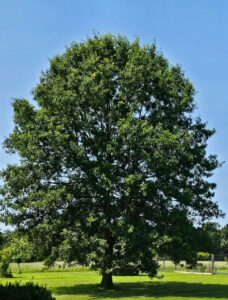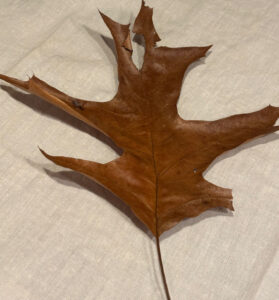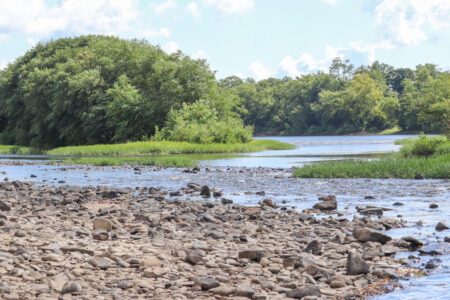Oak trees support more insects and wildlife than any other tree
- PHOTO PROVIDED Shown is a pin oak tree in this photo by Ritch Heintzelman
- PHOTO PROVIDED Shown is a weathered, leathery pin oak leaf is this photo by Bonalyn Mosteller.
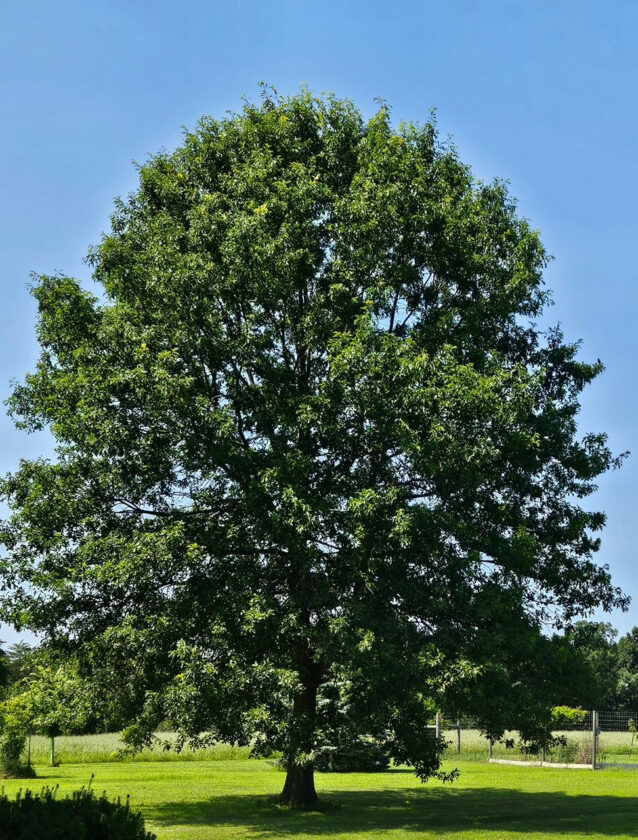
PHOTO PROVIDED Shown is a pin oak tree in this photo by Ritch Heintzelman
Our local forests have far fewer oak trees than were present in the 1800s and yet, of all our native trees, the oak tree is the single most important tree species for supporting a forest ecosystem.
Why do entomologists and botanists claim this unique accolade for oak trees? Oaks support more caterpillars, moths, butterflies, beetles and other insects as well as animal mast, than any other tree.
For wildlife, especially our white-tailed deer, acorn mast is a highly valued food source. An oak tree can produce up to three million acorns in its lifetime.
While many of you feed birds in winter — think nuthatches, titmice and chickadees — most of these cherished birds can’t survive on feeder seeds alone, even in the winter. For example, about 50% of a chickadee’s diet in winter comes from insects. Oaks support the production of these needed winter insects better than any other genus in our area. What would you guess is the number of species potentially supported by one oak tree?
Keep reading to learn about the oaks’ merits and wait for the answer to this question toward the end of the article.
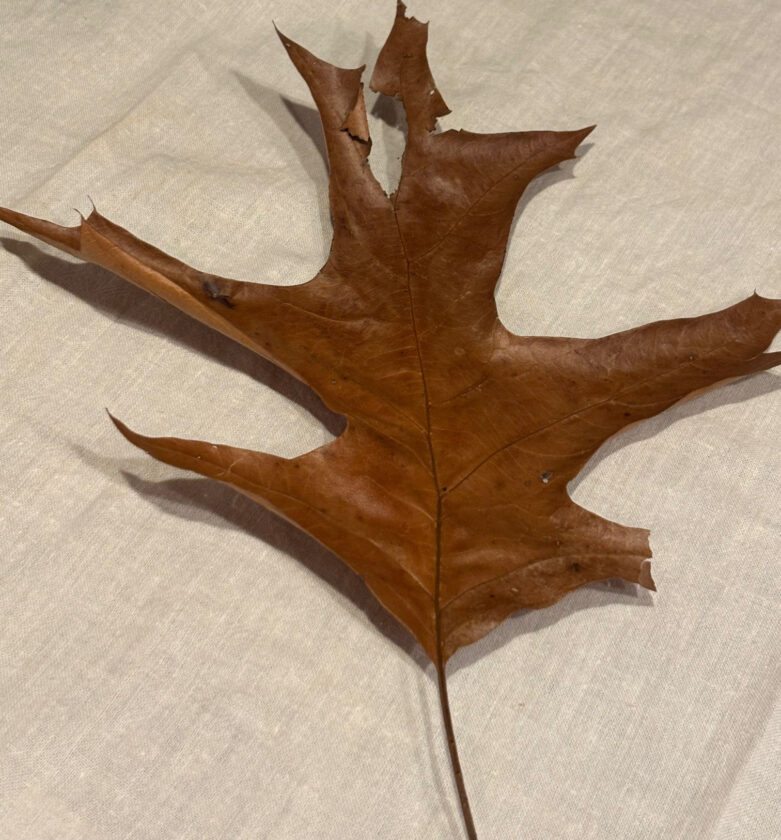
PHOTO PROVIDED Shown is a weathered, leathery pin oak leaf is this photo by Bonalyn Mosteller.
Oaks also contribute to caterpillar and insect habitat by producing tough leaves. Most oaks don’t drop their leaves until spring when the old, toughened leaves are pushed off by new buds. When oak leaves do drop to the ground though, their toughness supports the creation of deep leaf litter under trees. Thousands of caterpillars and other insects drop from oak trees and then bury themselves in the leaf litter to pupate into other life forms. Thick grass or mulch under your oak trees impede insects from easily digging themselves into the soil to reproduce. For this reason, consider creating soft landings for critters as they drop onto the ground prior to burying themselves.
Or, instead of mowing up to the tree trunk or using course mulch, consider surrounding your trees with plants such as hostas or spring ephemerals which ensure a softer landing and looser ground for burrowing insects. Also, some anglers have learned that digging worms is especially easy under oaks because the rich leaf litter best supports worm habitat.
As many thousands of birds migrate back to Lycoming County every spring, huge numbers of hatching insects are required to feed these birds but, more importantly, to feed their baby birds. For example while hummingbirds appreciate the nectar at our feeders when they return in April, baby hummingbirds can’t survive on nectar but also require insect food.
But, you protest, I only have a quarter acre of land which is way too small to support an oak tree. It is true that oaks grow to their maximum capacity if not crowded by other trees. However, here are the names of a few smaller genera which could thrive in our area on smaller plots: bear oak and dwarf chinkapin oak. If you have more acreage, mid-size oaks that flourish well in our area include scarlet oak, swamp white oak and chinkapin oak. Of course if you have enough open space or can influence someone who does, consider planting one of our largest and most majestic oaks: northern red oak, white oak or pin oak.
Now for the quiz answer: the oak is a keystone species and in some parts of the country, a single oak can support more than 500 species of moths, butterflies, beetles, animals and invertebrates.
Much of the information for this article derives from Douglas Tallamy’s excellent book entitled “The Nature of Oaks.”

